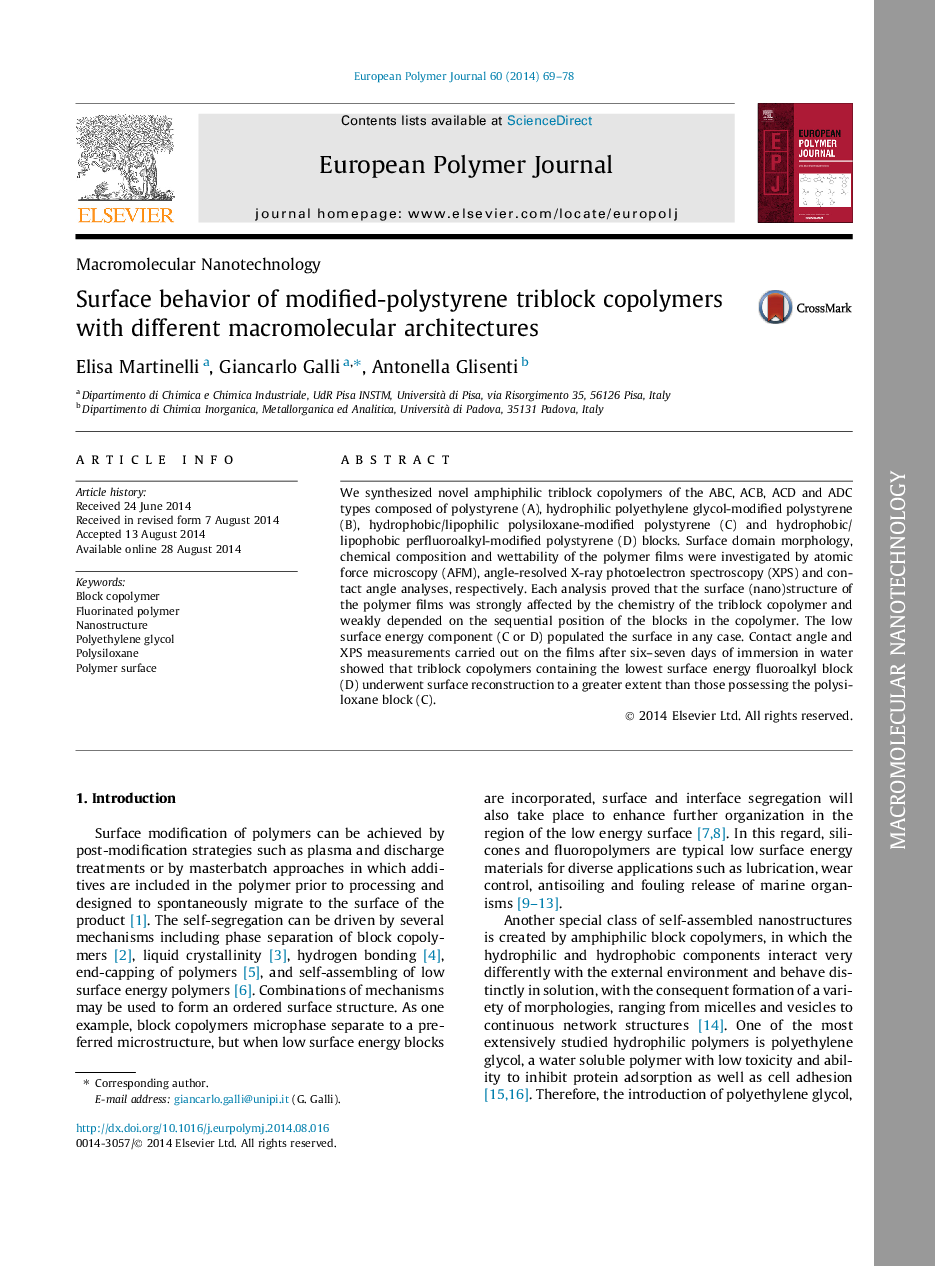| Article ID | Journal | Published Year | Pages | File Type |
|---|---|---|---|---|
| 1398077 | European Polymer Journal | 2014 | 10 Pages |
•New triblock copolymers with different macromolecular architectures were synthesized.•Surface (nano)structure was investigated by AFM, XPS and contact angle measurements.•Two methods were used to calculate the polymer surface tension.•Triblock copolymers underwent surface reconstruction upon contact with water.
We synthesized novel amphiphilic triblock copolymers of the ABC, ACB, ACD and ADC types composed of polystyrene (A), hydrophilic polyethylene glycol-modified polystyrene (B), hydrophobic/lipophilic polysiloxane-modified polystyrene (C) and hydrophobic/lipophobic perfluoroalkyl-modified polystyrene (D) blocks. Surface domain morphology, chemical composition and wettability of the polymer films were investigated by atomic force microscopy (AFM), angle-resolved X-ray photoelectron spectroscopy (XPS) and contact angle analyses, respectively. Each analysis proved that the surface (nano)structure of the polymer films was strongly affected by the chemistry of the triblock copolymer and weakly depended on the sequential position of the blocks in the copolymer. The low surface energy component (C or D) populated the surface in any case. Contact angle and XPS measurements carried out on the films after six–seven days of immersion in water showed that triblock copolymers containing the lowest surface energy fluoroalkyl block (D) underwent surface reconstruction to a greater extent than those possessing the polysiloxane block (C).
Graphical abstractFigure optionsDownload full-size imageDownload as PowerPoint slide
